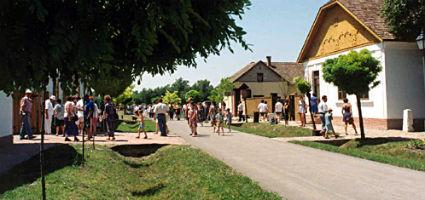2025. December 20. Saturday
Ópusztaszer National Historic Memorial Park - Ópusztaszer
 |
Address: 6767, Ópusztaszer Szoborkert 68.
Phone number: (62) 275-133 /103, (62) 275-133 /104
E-mail: info@opusztaszer.hu
Opening hours: 01.04-30-10.: Tue-Sun 10-18
01.11-30.03.: Tue-Sun 10-16 (Skanzen, external exhibiton closed) The current fare for those interested informed about the institution's website: www.opusztaszer.hu |
Makó became known of its onion both in Hungary and abroad. For the peasants of the county town onion production meant the only way of raising their social standard. It was true especially for the end of the 19th century.
The ornamentation of the facade and the hallway that was covered with brick showed that the family was reaching standards of the bourgeois.
From the hallway, we enter the kitchen. The big house, abode of a family of three generations, opens from there. The furniture belonged to a family, which was rising socially in consequence of its onion business. These families were becoming more civilized, though they still needed the furnace over which the grid held the baby onions at wintertime.
There are two chambers in the house, the food chamber and the so-called 'root' chamber where the grocery was kept in sand. The kitchen was at the end of the hallway. The people ate, cooked, and rested there after their return from the work on the field.
The barn was built at the end of the house. The shed behind stored the tools and equipments. The granary was built opposite the house. At the front of the garden the 'smoker' sweep was built. Next to them the so-called 'root washer' was placed.
The ornamentation of the facade and the hallway that was covered with brick showed that the family was reaching standards of the bourgeois.
From the hallway, we enter the kitchen. The big house, abode of a family of three generations, opens from there. The furniture belonged to a family, which was rising socially in consequence of its onion business. These families were becoming more civilized, though they still needed the furnace over which the grid held the baby onions at wintertime.
There are two chambers in the house, the food chamber and the so-called 'root' chamber where the grocery was kept in sand. The kitchen was at the end of the hallway. The people ate, cooked, and rested there after their return from the work on the field.
The barn was built at the end of the house. The shed behind stored the tools and equipments. The granary was built opposite the house. At the front of the garden the 'smoker' sweep was built. Next to them the so-called 'root washer' was placed.